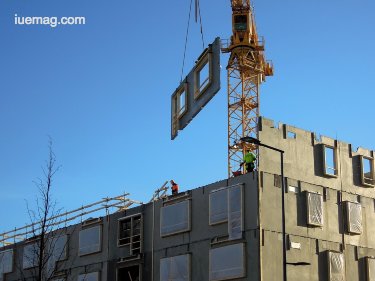

Special Features
A collection that's special to our readers, contributors and us especially for special news.

Ad
The Main Advantages of Prefabrication of Buildings
Prefabricated buildings are on the rise and it's for obvious reasons. Here is a list of advantages and reasons why modular buildings are catching the command of building owners. Read ON!
 While it may apply in many other fields as well, the process involved in prefabrication of buildings generally refers to the assembly of various parts of the intended structure at a manufacturing unit and subsequent transportation of the subassemblies to the actual construction site.
While it may apply in many other fields as well, the process involved in prefabrication of buildings generally refers to the assembly of various parts of the intended structure at a manufacturing unit and subsequent transportation of the subassemblies to the actual construction site. Now, in spite of it being the more economical option, there are multiple advantages that prefabrication has over traditional construction and we will try to list the most significant of those advantages next.
It’s the More Economic Option
In spite of the pieces being custom-made, modular construction is inexpensive, and from a business point of view, that’s a major benefit. Add that to the fact that prefabricated construction takes a lot less time than traditional construction and the financial advantage is made even more apparent as you save more money on construction financing.
Consistency
Factors like weather, uneven craftsmanship and shifting/independent contractors usually affect the quality of a regular building, resulting in irregularity. In case of prefabricated buildings, these aren’t even a factor. Unlike regular on-site constructions, all subassemblies of prefabricated buildings are constructed under a controlled, uniform environment, which automatically ensures consistent quality throughout the structure.
Mobility
The mobility of a modular structure is not only limited to delivery at the construction site. If and when you need to, you can simply disassemble the entire structure and move it to a new location. Since this can never be done with a brick and mortar building, the following are the advantages that this mobility provides to the owner.
- Saves time & money
- Saves overall construction effort and raw materials
- Provides easy and extensive redesigning opportunities
Green Construction
The production of the steel parts necessary for modular buildings does require a lot of power consumption at the manufacturing site, but compared to traditional constructions, they are a lot more eco-friendly, both in the long and short-term. The following points explain the situation.
- They leave or create very little waste during the manufacturing, assembly, disassembly and the construction process
- As they are made inside a factory, any waste or extra material is easily recycled
- Better wall-insulation leads to energy savings in the long run as well
Prefabricated Buildings are Safer
Whether it is the safety of the workers or the overall safety of the building after construction, modular buildings win hands down. In spite of them gaining a bad reputation in terms of stability in the early years, the materials and the engineering itself has improved dramatically to make them as strong as very well-made traditional buildings, and in some situations, even more than them. The risks and dangers of outside construction posed by hazardous sites, weather, etc., are mostly neutralized by the fact that the process is mostly manufactured in a controlled and safe environment.
Modular structures do have multiple advantages over regular buildings, but as is always the case, you need to make sure that what you are buying is coming from a reputed source. The residential steel building kit by Armstrong Steel is a fine example of the finest and hardiest products that the industry has to offer. Such companies have guarantees that gives you security.
Get the Latest & Recommended articles in your Inbox
It is important to remember that although steel buildings such as a residential steel building kit are cheaper compared to regular brick and mortar structures, you should not go for the cheapest option in the market because that is usually a sign of sub-standard materials being used to manufacture the parts.
Have you ever come across a prefabricated building? What's your take on this methodology? Whenever you plan a construction next, what would you aim to build - Modular or Regular and Why?
Copyrights © 2024 Inspiration Unlimited eMagazine
Any facts, figures or references stated here are made by the author & don't reflect the endorsement of iU at all times unless otherwise drafted by official staff at iU. This article was first published here on 15th December 2017.



